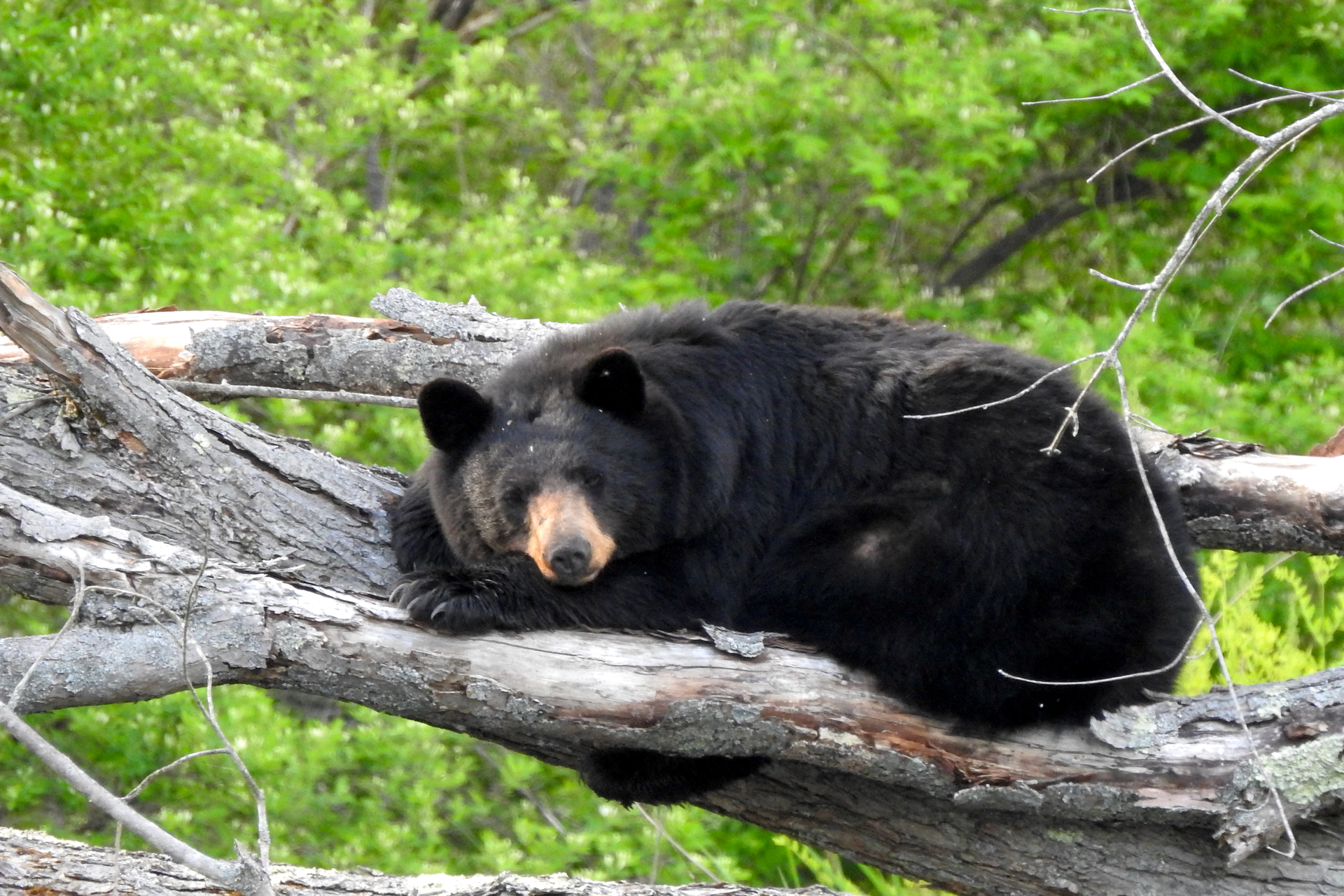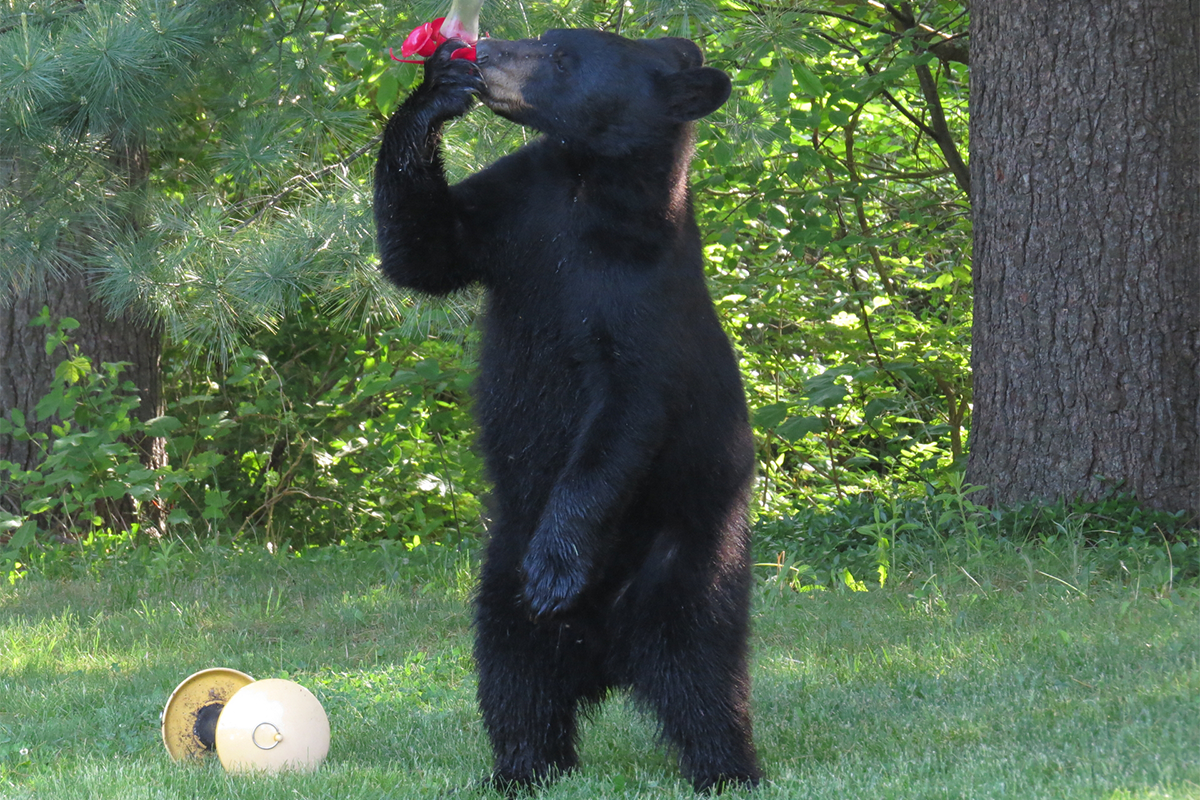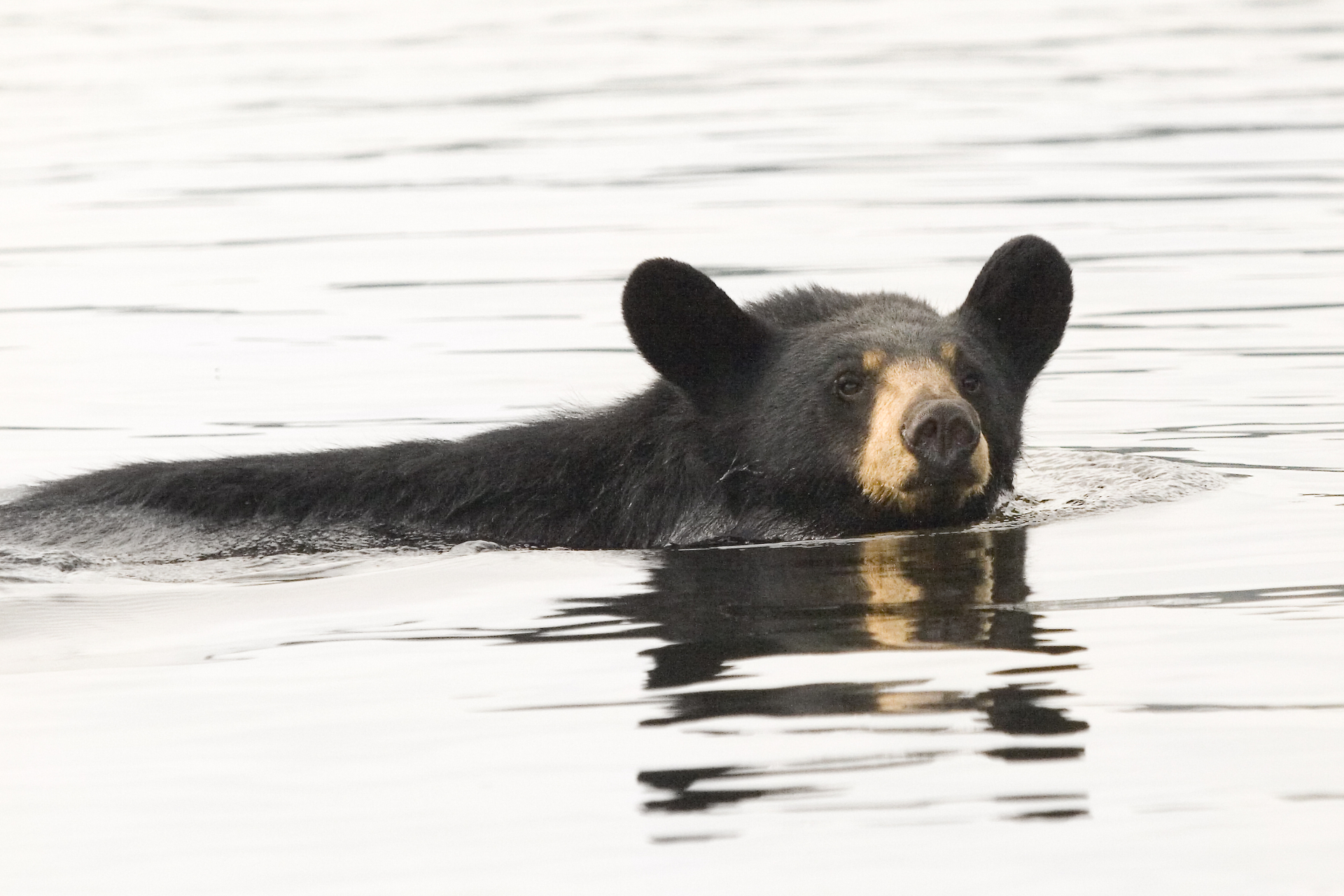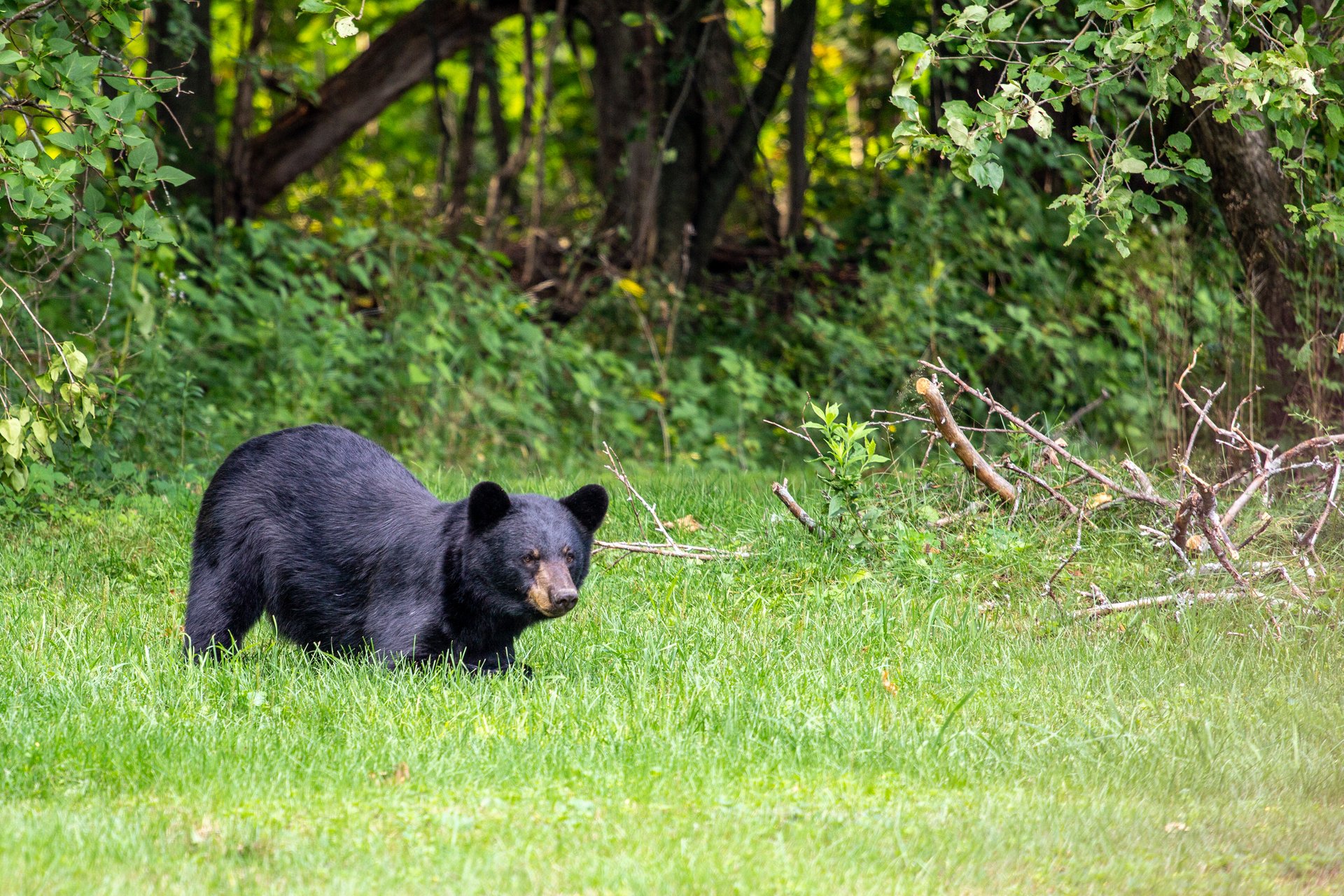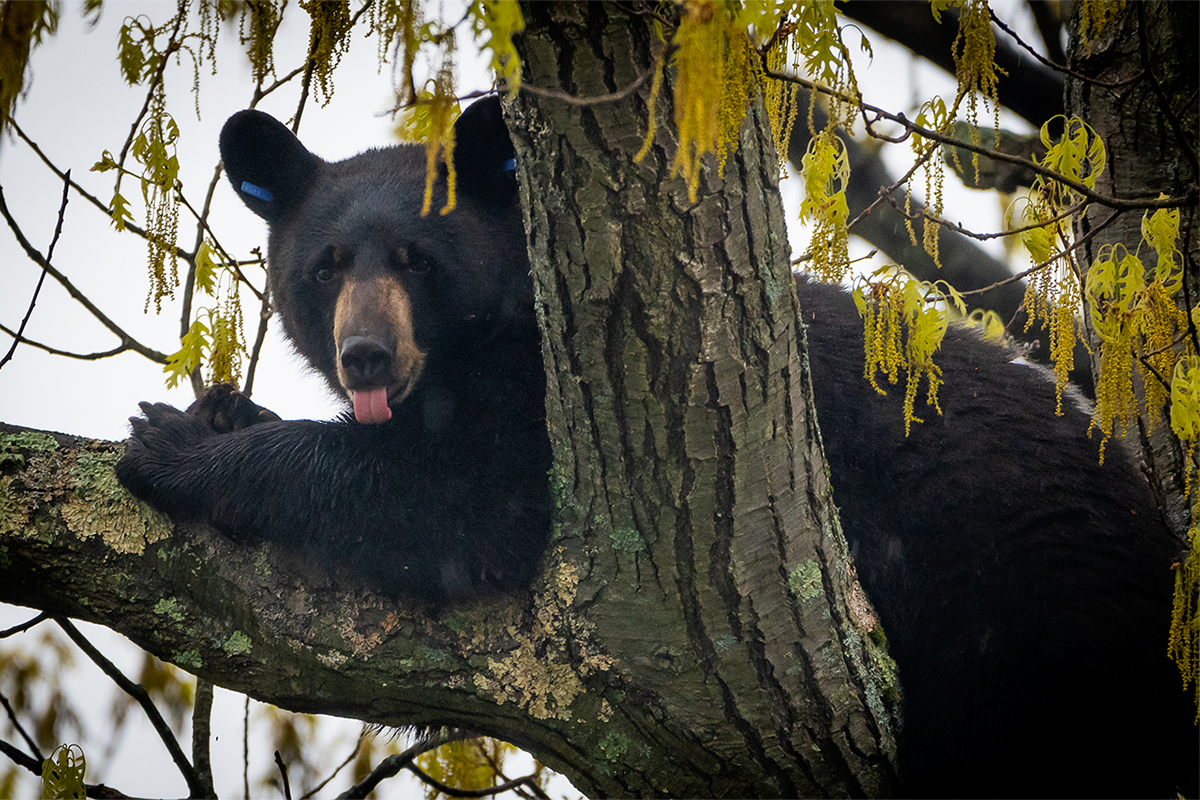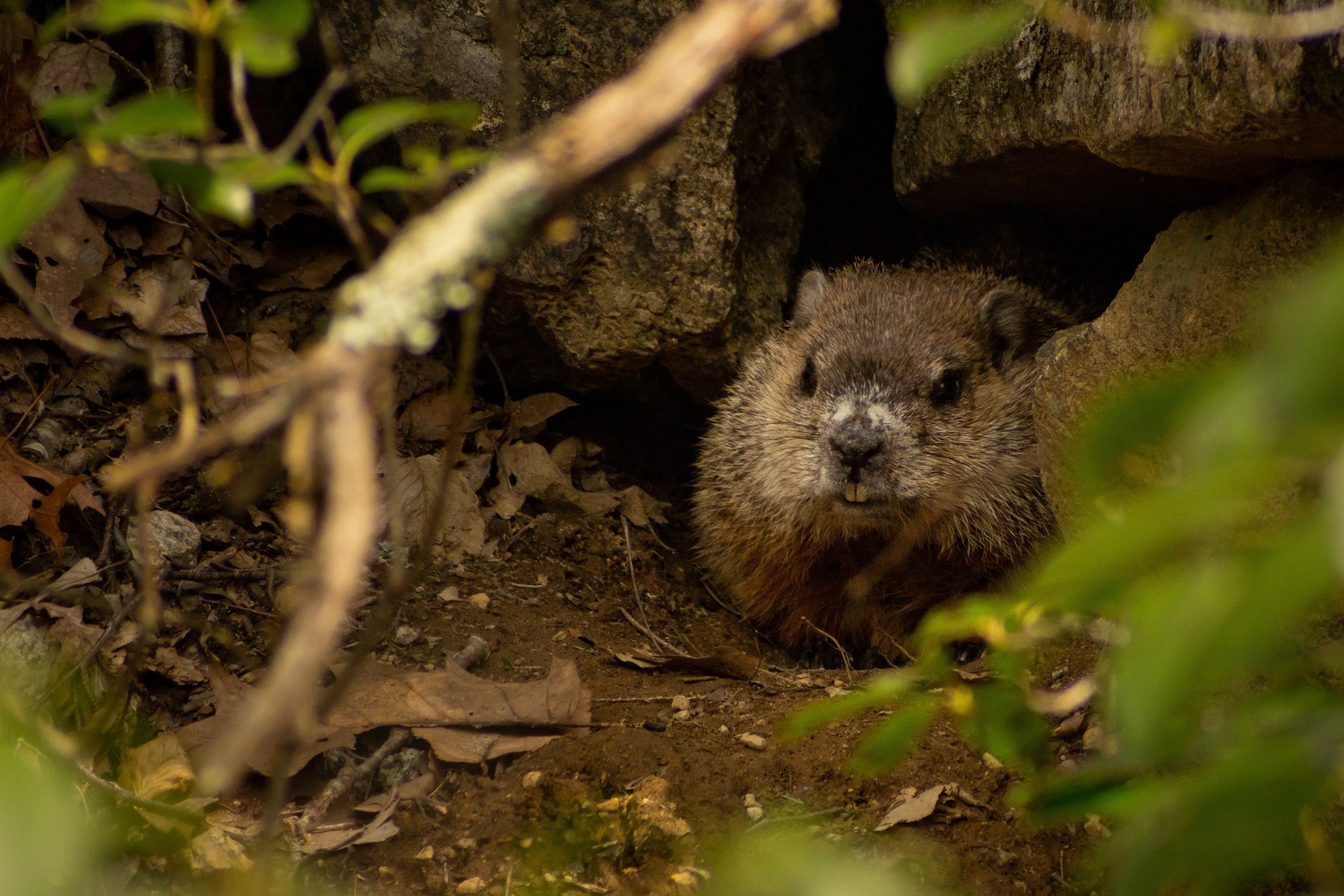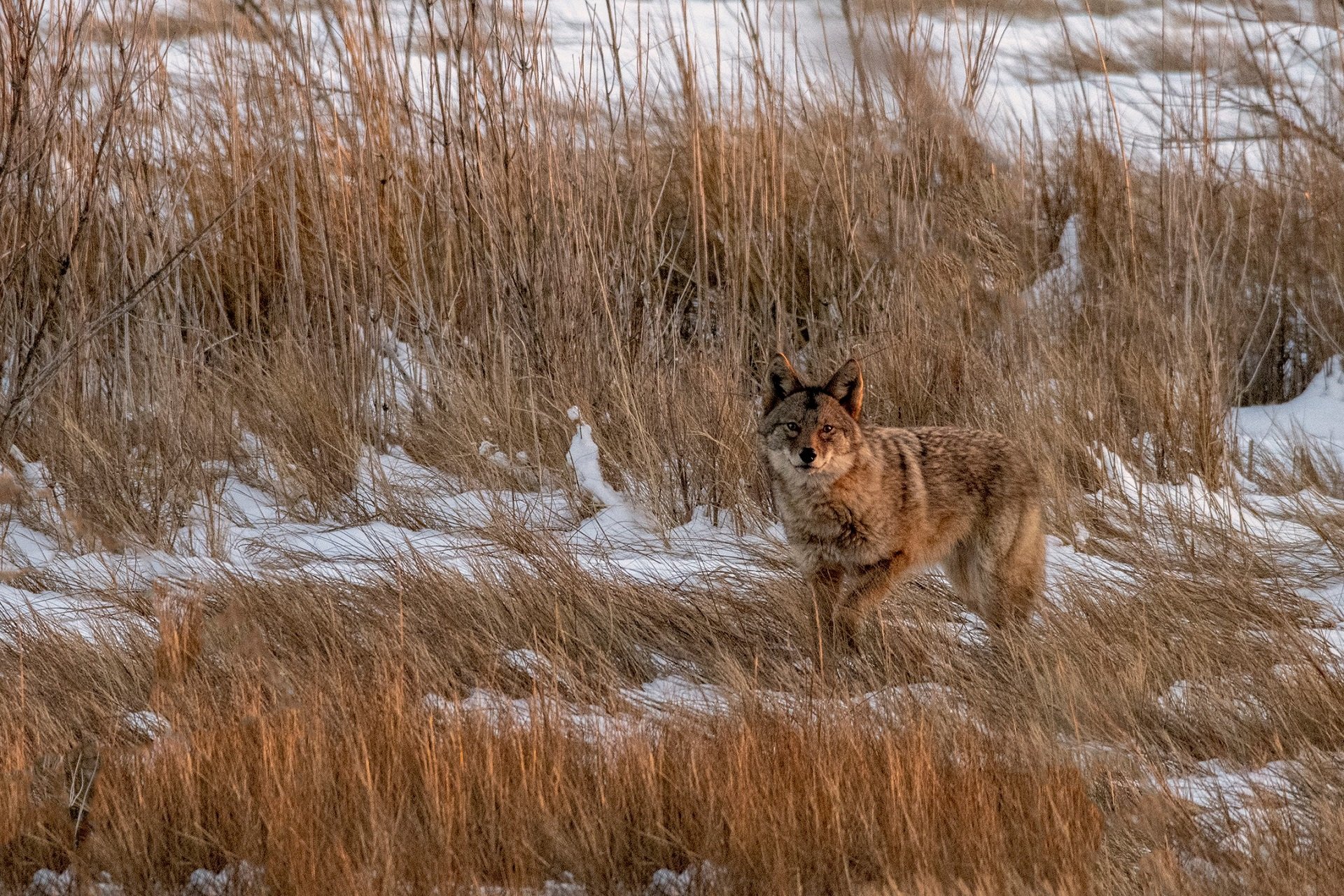Mammals in Massachusetts
Bears
The only bear species that makes its home in Massachusetts is the black bear (Ursus americanus). They are the largest meat-eating mammal in New England and have excellent eyesight, hearing, and sense of smell. Since the 1970s, bear populations have increased across the state.
How to Identify Black Bears in Massachusetts
As the name suggests, black bears have a thick black fur coat (some black bears can have brown fur in different regions of the US), with a white patch on their chest. Curved claws protrude from the giant paws, great for climbing and digging. They have excellent eyesight and hearing, and an amazing sense of smell. Males can weigh anywhere from 130-600 pounds, and females can be slightly smaller, only reaching a weight of 400 pounds.
Bear Behavior
When is Black Bear Mating Season?
Female black bears, or sows, are sexually mature between three and five years of age and reproduce every other year. Breeding takes place during the summer, usually in June or July, when the males, or boars, seek out and mate with females.
At birth, the cubs are blind, hairless, and weigh only 8 to 10 ounces. The sow’s milk contains over 20 percent fat and is very rich compared to human milk, which contains only 4 percent fat. The young grow quickly and when the sow and her cubs emerge from the den in April, the cubs can weigh 4.5-9 pounds. Although they continue to be nursed throughout their first summer, the cubs also begin eating solid food.
Cubs leave their mother following their second winter when they are 16 or 17 months old. Young females are allowed to occupy portions of the mother’s territory, but the males are forced to move on to find their own territory. It is often these rejected, young males that wander into residential areas where conflicts with people sometimes occur. In the wild, they have a lifespan of 25 years.
What do Bears Eat?
Black bears are omnivorous and consume a variety of foods, changing their diet with the seasons. In the spring, bears take advantage of emerging green plants. Berries, flowers, and fruits make up a large portion of their summer diet, until fall when they eat succulent grasses (including corn) as well oak, beech, and hickory trees. Throughout the year, they also eat insects, frogs, snakes, fish, and garbage. Bears also raid bird feeders and beehives for honey and bee larvae when available.
As members of the Order Carnivora, black bears will eat small mammals, birds (usually the offspring of ground-nesting birds), and animal carcasses, including white-tailed deer, when the opportunity presents itself.
Bear Dens
Black bears typically den in caves, brush piles, depressions under fallen trees, or rock crevices. Occasionally a bear will just curl up on the ground and wait to be covered with snow. Except for mothers with cubs, bears den alone.
The temperature of the den varies depending on the snow cover and whether the entrance is open. Although some bears will make a bed of pine boughs, grasses, or leaves on the floor of the den, most dens provide little insulation and merely act as windbreaks.
Black bears rely on their thick fur, which doubles its insulating value in the fall, and the 3 to 4-inch layer of fat that they acquired during their summer and fall food consumption. Emergence from the den is determined by the availability of food, rather than weather conditions, and usually takes place in April.
Bear Range in New England
Compared to other mammals, the home ranges of male black bears are far-reaching and vary according to the season and available food sources. The greatest distances are covered during the breeding season when males search for females. An adult male can cover an area of 122 square miles during a year. On the other hand, a sow (female) with cubs stays within an area of only about 12 square miles and a barren female may remain in an area of only 10 square miles annually.
Black Bear Hibernation
Black bears are not considered "deep" hibernators. When bears enter the den, usually between early November and mid-December, their body temperature, heart rate, and respiratory rate drop to conserve energy and help the bear survive the winter months. But, unlike the other hibernators, the black bear’s body temperature drops very slowly to about 88 degrees, only a slight change from its summer temperature of 100 degrees.
In comparison, a woodchuck’s body temperature drops to an average of 40 degrees during hibernation. The higher body temperature means that the bear can respond to danger much faster than animals with lower body temperatures. As with the other hibernators, the bear’s heartbeat drops from 40 to 50 beats per minute to 8 beats per minute.
For 100 days, black bears do not eat, drink, urinate, or defecate. Urea, a waste product found in urine, can be fatal at high levels in most animals (including humans), but bears can break it down. The resulting nitrogen is used to build protein, which helps bears maintain muscle mass and healthy organ tissue during inactivity. During this time, their stored body fat provides the nutrients and water they need, resulting in a 30 percent loss of body weight.
Are Bears Dangerous?
Conflicts between people and bears are becoming more commonplace as land is developed in or near bears' preferred habitats of thick forests. As black bears lose their feeding and denning sites to development, they must move greater distances to find food—and often find it in residential areas. In addition, young black bears are driven from their mother's territory after their second winter, when she is again ready to mate. It's at this time that young bears can show up in unexpected places, including suburban neighborhoods and even on Cape Cod.
If a black bear visits a property and finds no food it will most likely move on. If it finds food and the food continues to be available, the bear will frequent the area time and time again.
Bears and Bird Feeders
Black bears will raid birdfeeders in any area where this species regularly occurs, sometimes damaging feeders. Once a bear has discovered a food source it will revisit that source month after month. Bears that become habituated to eating in backyards risk eventually losing their fear of humans, which can lead to conflict.
If you choose to put up a feeder, you can minimize risk by doing so only from mid-December to the end of February, when bears are typically denned for the winter. If it is a mild winter, bears could remain active year-round.
Bears in Gardens, Berry Patches, & Orchards
In the late summer and fall, when bears are "fattening up" in preparation for winter hibernation, bears will consume just about any species of fruit or berry found in orchards and yards. To discourage bears, pick fruit daily as it ripens and before it falls to the ground. Strobe lights, firecrackers, air horns, or loud music will deter black bears, but the location of the light or sound should be moved every few days to confuse the bear.
Electrified, six-foot-high, seven-wire fencing has been used successfully to keep bears away from crops, but this technique may be cost prohibitive for the small grower. For an electric fence to be an effective deterrent to bears, the fence must provide a shock of 5,000 to 6,000 volts.
Bears and Beehives
To a black bear, a beehive is an easily accessed container of delicious snacks—bee larva and honey. To the beekeepers, it's a costly loss of a hive, bee colony, and honey.
Occasionally, bears can be deterred from attacking hives by placing the hives in large open spaces, far away from woods or other areas where they can find cover and feel safe. Some beekeepers have found that strapping a hive together (top to bottom) with one or two heavy-duty ratcheting straps, has been successful. Even if the bear knocks the hive over, the supers do not separate, and the bear is unable to get to the honey or larva.
What to Do if you See a Black Bear
If you see a bear but it doesn’t see you, slowly and quietly back away while keeping your eyes on the bear, to determine whether it’s following you. Do not try to run from a bear or climb a tree and never approach to get a better look or photo.
If the bear is aware of your presence, make yourself look as large as possible, raise your arms, and hold up your backpack or a coat. Sing loudly or speak in a firm, non-threatening voice while backing away. If the bear tries to approach, be aggressive: yell and wave your arms, jump up and down, and blow a whistle or horn.
An agitated black bear will often huff, stamp its paws, and make a lot of noise to let you know it wants its space. Continue backing away.
Should the bear attack, fight back by punching or kicking the bear’s face. Use any nearby branches or rocks to defend yourself, and you can even use bear spray to deter the animal.
Threats Facing Black Bears
Conflicts between people and bears are becoming more commonplace as land is developed in or near bears' preferred habitats. As black bears lose their preferred feeding and denning sites to development, they must move greater distances to find food—and often find it in residential areas.
How Mass Audubon Helps Bears
Before 1952 black bears could be killed by anyone, at any time. Because of this practice, and the loss of their forest habitat, black bears were rare in the Commonwealth in the 1800s and early 1900s. That phenomenon is changing. Regulations passed in 1952 made it illegal to kill black bears except during regulated hunting seasons with a hunting license.
Due to this conservation effort, the Massachusetts Division of Fisheries and Wildlife estimate that in 2005 there were 3,000 bears in the Commonwealth, most west of the Connecticut River, and the number is rising at a rate of about 8% a year.
Mass Audubon is helping bears by protecting land, building resilient landscapes, and creating unfragmented habitats where they can thrive. You can help us conserve and protect bears' habitat by becoming a member today.
Stay Connected
Don't miss a beat on all the ways you can get outdoors, celebrate nature, and get involved.




